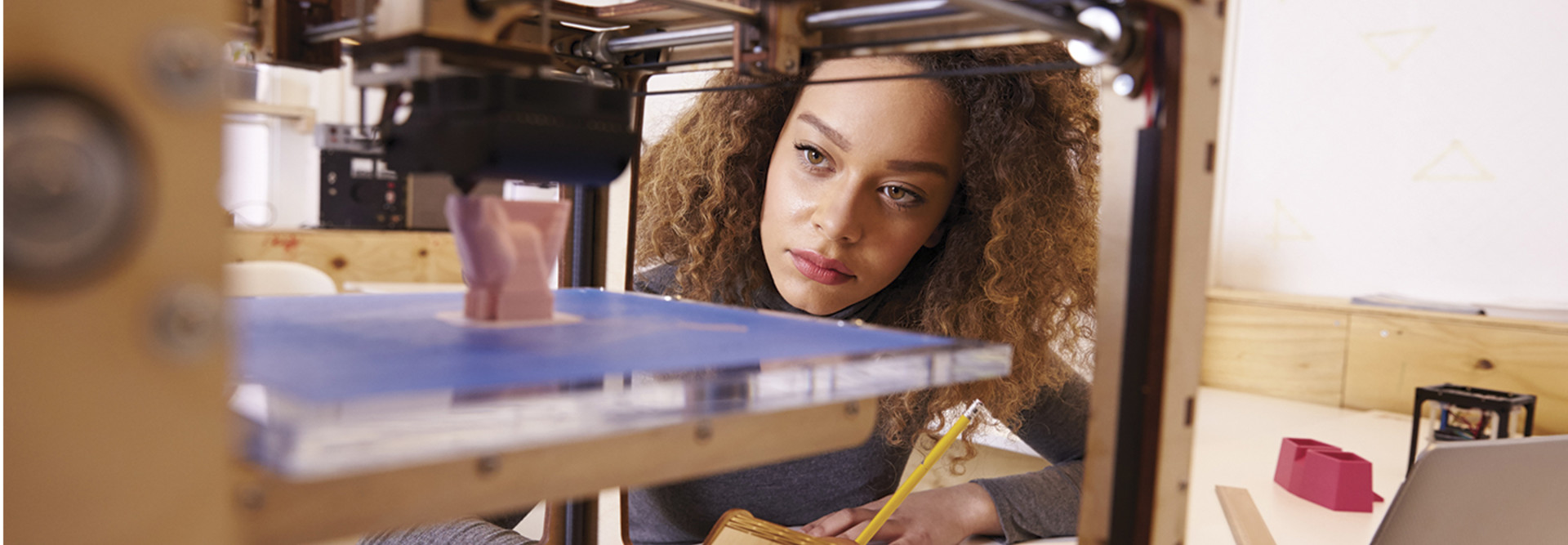Advances in Additive Manufacturing Create Business Opportunities
First-generation 3D printing could handle simple objects but lacked speed. Second-generation solutions tackled new materials, complex constructions and reduced total output time. The coming year is primed for more additive manufacturing advancements, including:
- Liquid precision — As noted by Science Daily, a new jet-powered droplet method “allows for extremely small sizes and allows designers to change droplet sizes, shapes and dispersion, as well as patterns of droplets, on the fly.” This scalable manufacturing model is also simple, making it ideal for everything from biomedical applications to acoustic materials and production-line products.
- Resilient printing — Additive manufacturing engineering solutions have historically demanded temperature- and humidity-controlled environments to effectively function. New 3D printers in development can operate onsite at remote industrial environments to print key components on demand.
- Speedy production — New techniques developed by Harvard University’s Wyss Institute for Biologically Inspired Engineering and John A. Paulson School of Engineering and Applied Sciences let printers switch materials up to 50 times per second, which “enables the creation of complex shapes in a fraction of the time currently required.”
Manufacturing Companies See a Skills Gap in 3D Printing
Industry 4.0 has arrived — this mix of traditional and “smart” technology makes it possible for manufacturers to track progress, improve performance and manage production with unprecedented precision.
The problem? Supplying skilled staff to ensure companies’ investments aren’t wasted.
As noted by research firm Deloitte, 89 percent of manufacturing executives point to a talent shortage in the industry, partly due to misperceptions about job roles and partly caused by the uptick in baby boomer retirees.
But there’s also a more fundamental problem: missing skills. Current workforces are often unfamiliar with new additive manufacturing technologies, and the rapid rate of new solution development makes it difficult for companies to keep pace. While in-house training can shore up basic skill sets, organizations are now looking to the next generation of workers: recent post-secondary graduates.
MORE FROM EDTECH: Read about a partnership between MakerBot and the University of Pennsylvania.
4 Ways for Higher Education to Fill the Additive Manufacturing Pipeline
Additive manufacturing skills are in demand, and colleges have the educational potential to bolster this new workforce. But there’s a disconnect.
According to recent research, “existing courses on design, engineering and management related to production and manufacturing do not systematically deliver the necessary skills and knowledge for an effective deployment of AM technologies.”
As noted by Will Hastings of ARC Advisory Group, meanwhile, 3D printing has proved divisive, with early adopters pointing to 3D printed products as the ultimate manufacturing solution and detractors labeling it as hype. According to Hastings, however, there’s now movement toward a middle ground: “Additive manufacturing is simply another tool within the manufacturer’s tool set.”
So how do institutions build a bridge between emerging additive solutions and essential Industry 4.0 skills? Four components are critical:
- Improved technology — For universities to create competitive 3D printing programs, they need technology that can keep pace. Students working on last-generation devices will be a step behind in the workforce, especially as additive manufacturing techniques diversify. Equipping labs with cost-effective, current-generation technology is critical.
- Practical application — Additive manufacturing is no longer viewed as a proof-of-concept prototyping solution; it’s now a full-fledged, production-worthy technology. Developing top-tier graduates for the manufacturing workforce demands training that focuses on function over form. Practical application of technically complex concepts is now the industry expectation.
- Cohesive credentials — In much the same way that colleges have created end-to-end cybersecurity tracks to meet the demand for information security skills, they are now developing additive manufacturing programs that are cohesive and comprehensive to help standardize new skill sets.
- Scope of work — 3D printing in higher education needs to go beyond the production line to deliver cross-industry skills. For example, Australia’s Macquarie University and Western Sydney University have developed 3D printed bones for medical applications, while teams at the University of California created low-cost educational robotics kits. And at the Oslo School of Architecture and Design, students are encouraged to experiment with complex designs and building techniques through 3D printing.
Additive manufacturing offers critical benefits to production speed, consistency and control. Skilled staff shortages and increased solution complexity, however, can widen the gap between 3D potential and performance. Building a better workforce demands well-equipped colleges with programs designed to deliver cohesive, cross-industry programming.











